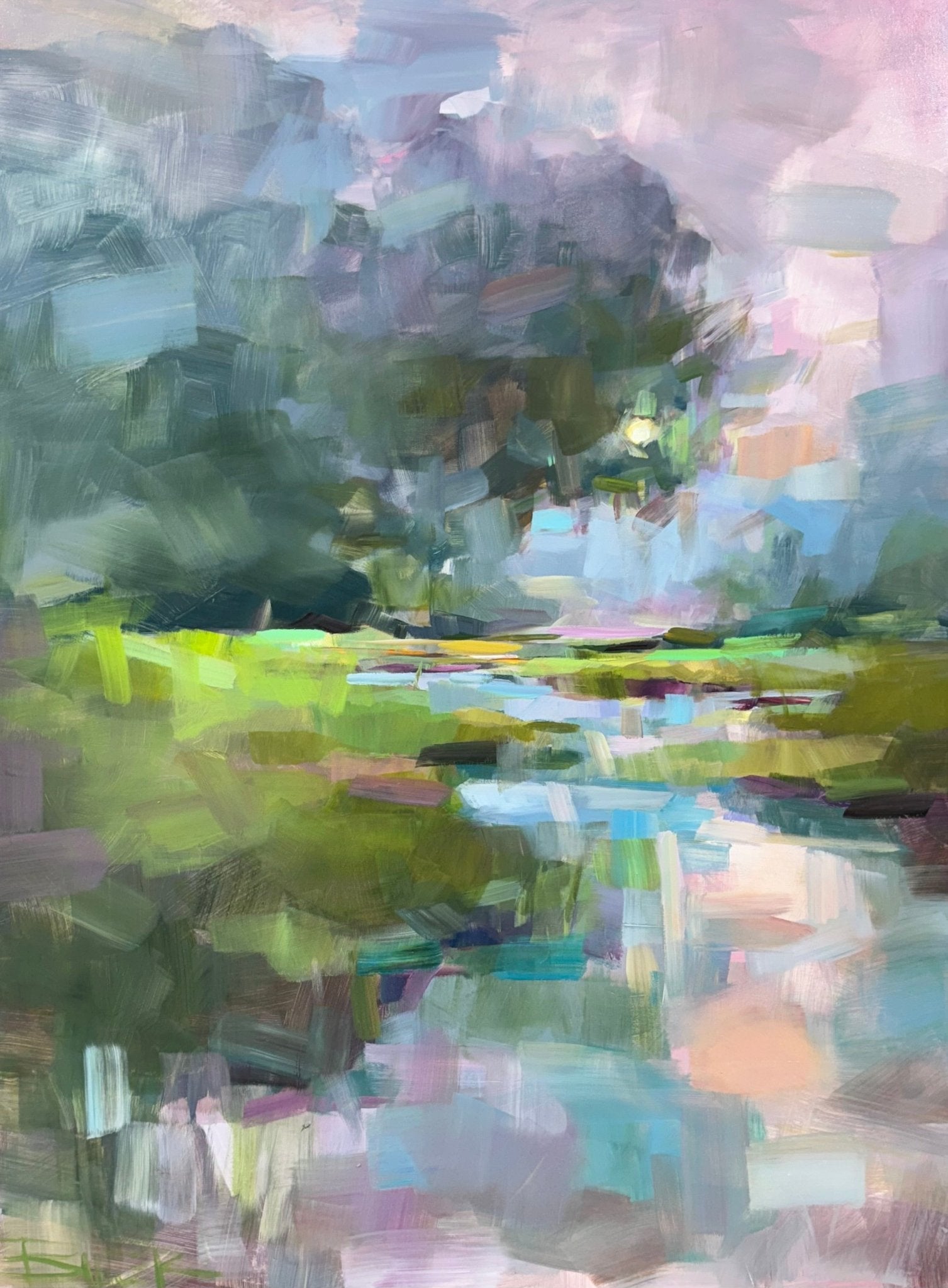Exploring All Concerning Oil Paints: An Overview to Recognizing Their Elegance and Value
Oil paints have captivated target markets for centuries, using a look into the imaginative mastery of different ages. Their abundant history is intertwined with innovative strategies and profound emotional expression. Understanding the materials and methods behind these artworks can improve appreciation. In addition, the market for oil paintings provides possibilities for collectors and financiers alike. As one discovers this fascinating world, the inquiry emerges: what makes an oil painting absolutely important?
The Background of Oil Paint: A Trip Through Time
Oil painting has roots that date back to old times, it genuinely prospered during the Renaissance, when musicians found its versatility and abundant shade potential. Early examples can be traced to the 7th century, with strategies evolving especially throughout cultures. The medium came to be prominent in Northern Europe in the 15th century, specifically with the works of artists like Jan van Eyck, that pioneered its usage for in-depth realistic look and lively shades. This period noted a departure from tempera paints, permitting better deepness and structure. As oil painting spread, it influenced plenty of musicians, causing masterpieces by popular numbers such as Leonardo da Vinci and Rembrandt. The medium's heritage continues, forming the art world well into contemporary times.
Comprehending Oil Paints: Products and Techniques
As musicians discover the world of oil paints, they encounter a diverse array of products and techniques that define this tool. The key elements of oil paint consist of pigments, which supply color, and drying oils, such as linseed, that bind the pigments and assist in application. Different ingredients can modify the paint's appearance and drying out time, enhancing adaptability. Techniques like glazing, where transparent layers are accumulated, and impasto, which includes using thick paint, enable for different visual effects. Additionally, making use of brushes, combination knives, and also fingers can produce special appearances and finishes. Recognizing these techniques and materials makes it possible for musicians to totally share their creative thinking and achieve the desired impact in their artwork.
The Role of Color in Oil Paints
Shade plays a pivotal function in oil paints, affecting both visual charm and psychological vibration. Understanding shade theory essentials, consisting of the partnerships in between shades, can improve an artist's capacity to convey mood and environment. In addition, mastering color blending strategies permits better depth and richness in a paint's combination.

Color Concept Fundamentals
Recognizing shade concept is essential for musicians dealing with oil paints, as it forms the structure for creating visually interesting and harmonious compositions. Color theory encompasses the research study of exactly how colors engage, the color wheel, and the relationships between key, secondary, and tertiary colors. Musicians utilize complementary shades to boost contrasts and produce centerpieces, while similar colors advertise unity and cohesiveness within an item. In addition, the ideas of great and warm colors affect the understanding of depth and area in a painting. Grasping these concepts enables musicians to control shade successfully, directing the audience's eye and connecting their desired message. Mastery of shade concept ultimately improves a musician's ability to convey emotions and ideas through their work.
Psychological Impact of Shade
The psychological impact of shade in oil paintings plays a crucial role in just how viewers perceive and attach with art work. Shades evoke certain feelings and moods, influencing the customer's psychological state. For example, warm colors like oranges and reds can produce a feeling of warmth and power, while great tones such as blues and greens often stimulate peace or self-contemplation. Artists strategically choose shade combinations to improve narrative components, leading the target market's psychological trip. The saturation and contrast of colors additionally enhance these results, attracting attention and producing emphasis. Ultimately, the interplay of shades in oil paintings not just improves their aesthetic allure however additionally functions as an effective medium for psychological expression, enhancing the customer's experience and interpretation.
Shade Mixing Techniques
While lots of aspects of oil paint contribute to the overall make-up, mastering shade blending strategies is crucial for attaining desired effects and depth. Color mixing can be come close to through various approaches, consisting of the subtractive and additive processes. Additive blending entails combining colors of light, while subtractive blending counts on pigments, where shades blend to produce brand-new shades. Artists typically use a minimal combination to create harmonious works, comprehending the relationships in between main, additional, and tertiary colors. Techniques such as glazing and scumbling further boost deepness and luminance. By skillfully blending shades, an artist can stimulate emotions, develop prime focus, and attain a feeling of realism, eventually boosting the painting's psychological and aesthetic impact.
Famous Oil Painters and Their Iconic Functions

Famed for their mastery of shade and method, oil painters have actually developed several of the most renowned artworks in background. Renowned musicians like Vincent van Gogh astounded audiences with his stirring brushwork in "Starry Night," while Claude Monet's "Impact, Daybreak" prepared for Impressionism. Leonardo da Vinci's "Mona Lisa" continues to be a long-lasting icon of imaginative genius, showcasing his skill in recording human expression. Rembrandt's "The Evening Watch" shows his cutting-edge usage of light and shadow. Various other notable figures include Pablo Picasso, that reinvented modern-day art with his vibrant testing in jobs like "Les Demoiselles d'Avignon," and Georgia O'Keeffe, whose dynamic representations of blossoms and landscapes aided define American innovation. Each musician's special design contributed greatly to the oil paint landscape.
Exactly how to Assess the Top Quality of an Oil Painting
Examining the quality of an oil paint includes a careful assessment of workmanship strategies, along with an evaluation of shade and make-up. Observing brushwork, layering, and the application of paint can disclose the artist's ability degree. Additionally, the interaction of shades and the overall arrangement of elements contribute considerably to the painting's visual worth.
Analyzing Craftsmanship Techniques
A careful evaluation of craftsmanship strategies is crucial for figuring out the high quality of an oil painting. Evaluators need to first take a look at the application of paint; thick, distinctive brushstrokes might recommend a competent hand, while excessively consistent applications could suggest a lack of depth. oil paintings for sale. The layering technique is likewise crucial; the visibility of lusters and differed density can enhance luminosity and complexity. In addition, the top quality of the products made use of, such as the canvas and pigments, plays a considerable duty in durability and general visual. Interest to detail in elements like sides and shifts in between shades mirrors the musician's dedication to their craft. Eventually, these techniques contribute to the painting's emotional effect and market worth, offering as indications of the artist's skill and intent
Examining Shade and Structure
While assessing the high quality of an oil painting, one have to focus on the interplay of color and structure, as these elements are fundamental to the artwork's overall influence. Color selections can evoke emotions and develop mood; therefore, the musician's palette should be taken a look at for consistency and contrast. A healthy composition directs the viewer's eye and develops a feeling of unity. Artists often employ methods like the guideline of thirds or leading lines to improve visual rate of interest. Furthermore, the usage of light and darkness can add deepness, boosting the three-dimensionality of the paint. Inevitably, an effective oil paint weds shade and structure, involving the customer and welcoming a deeper admiration of the musician's vision and strategy.
Caring for and Preserving Oil Paintings
Proper treatment and conservation of oil paintings is essential for preserving their stability and durability. To safeguard these art work, it is vital to present them far from straight sunshine, which can cause fading and staining. Maintaining a secure environment with controlled temperature level and moisture more help in preventing damages. Cleaning need to be done carefully making use of a soft, completely dry cloth, preventing any type of extreme chemicals that can damage the paint or varnish. Regular inspections for indicators of damage, such as breaking or flaking, are advisable. When saving or carrying oil paintings, proper cushioning and framing are needed to stay clear of physical harm. Inevitably, diligent care adds to the aesthetic charm and value of oil paintings with time.
The Market for Oil Paints: Collecting and Investing
Comprehending the marketplace characteristics for oil paintings is important for enthusiasts and investors alike. The value of these art work is influenced by numerous variables, consisting of the musician's track record, historical importance, and present trends. Enthusiasts frequently seek items that reverberate directly while considering possible gratitude in worth. Galleries and auctions act as key locations for purchasing and selling, with costs rising and fall based on need and rarity. Buying oil paintings needs research study into the market, in addition to an understanding of credibility and provenance. Additionally, arising musicians may use opportunities for substantial returns, while developed names can regulate high prices. Overall, a critical method to accumulating can produce both aesthetic pleasure and financial benefits.

Regularly Asked Inquiries
What Are the Environmental Effects of Oil Painting Products?
The ecological impacts of oil paint materials include the launch of unpredictable natural compounds (VOCs), damaging waste generation, and source extraction for pigments. These elements contribute to pollution and ecological destruction, increasing concerns amongst environmentally conscious musicians and customers.
How Do Various Canvases Affect Oil Painting Results?
Different canvases influence oil paint results substantially. Structure, surface, and absorbency high quality can change paint application, drying times, and shade vibrancy. Musicians typically pick certain canvases to achieve desired results and boost their creative expression.
Can Oil Paintings Be Restored if Damaged?
If harmed, Oil paintings can indeed be recovered. Professional conservators make use of different strategies to fix rips, tidy surface areas, and address staining, guaranteeing that the art work preserves its original beauty and value for future generations.
What Are the Signs of an Original Oil Painting?
The indicators of an original oil painting include visible brush strokes, texture variants, and an uneven canvas weave (oil paintings for sale). Furthermore, authenticity may be confirmed through provenance, signatures, and the visibility of a varnish layer distinct to oil tools
Just How Has Technology Influenced Modern Oil Painting Techniques?
Innovation has substantially affected modern-day oil paint techniques by presenting digital devices for preparation, boosted materials for structure and longevity, and on the internet systems for selling and sharing art, thus expanding musicians' imaginative opportunities and target market reach. Oil painting has roots that date back to ancient times, it really grew throughout the Renaissance, when artists discovered its versatility and rich color possibility. The emotional effect of shade in oil paintings plays a vital role in just how visitors regard and link with art work. While many elements of oil paint add to the total make-up, grasping shade blending strategies is necessary for accomplishing desired results and depth. Examining the high quality of an oil paint involves a cautious analysis of workmanship methods, as well as an analysis of color and make-up. While examining the quality of an oil painting, one must focus on the interplay of color click here and composition, as these elements are basic to the artwork's overall influence.